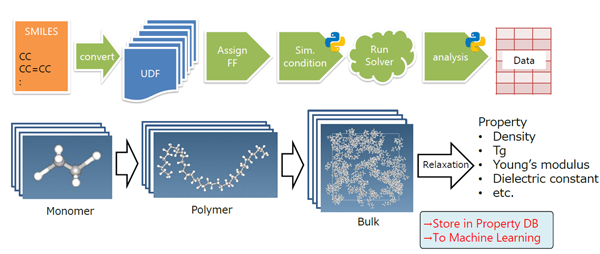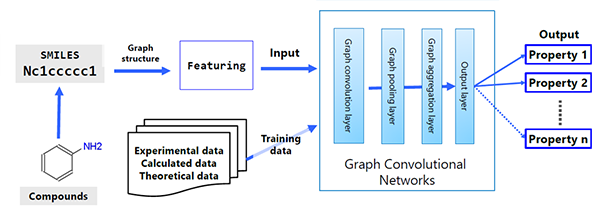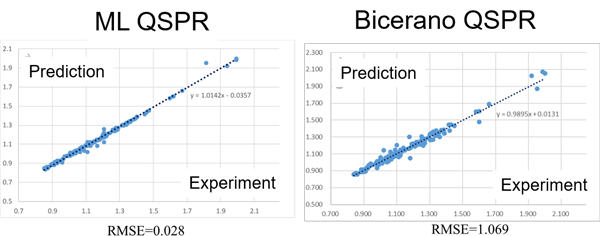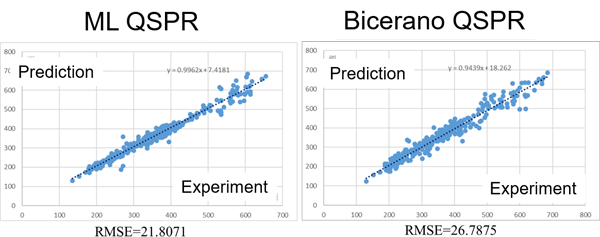- Data Science
- Mechanical / Viscosity / Viscoelasticity
- Thermal
- Small molecule penetration / diffusion / adsorption
- Optical / Electrical / Magnetic
- Interface / Phase Separation / Particle Dispersion
- Molecular structure / Affinity / Solubility
- Other Properties
- Materials Science
[Analysis Example] Machine Learning QSPR and Materials Informatics
Quantitative structure-property relationship using Deep Learning
J-OCTA includes several functions related to the Materials Informatics. For example, the following are included.
· "Modeling API" (Fig. 1) that allows users to run Python scripts from molecular modeling to simulation without using a GUI, and to accumulate a large amount of data such as physical properties.
· Function to obtain molecular descriptors from molecular structures written in SMILES and so on.
· Function for extracting common structures from multiple molecular structures.
· Machine learning QSPR (Fig. 2, Quantitative Structure-Property Relationship), which uses graph convolutional neural networks to learn and predict the relationship between molecular structures and properties.
 Fig.1 modeling API
Fig.1 modeling API
 Fig.2 Machine Learning QSPR
Fig.2 Machine Learning QSPR
Here is an example of predicting physical properties using machine learning QSPR.
For amorphous polymers, Figure 3 and Figure 4 target the density and glass transition temperature, respectively. Machine Learning QSPR uses the same experimental data as the Bicerano method for training, with 80% of the experimental data as the training data and 20% as the test data. The graph shows a comparison of the test data. Note that the molecular descriptors are based on the monomer structure, so the molecular weight dependence is not taken into account.
The left side of each figure is the machine learning QSPR, and the right side is the conventional QSPR (Bicerano method). The vertical axis is the result of QSPR and the horizontal axis is the experimental data. Depending on the training parameters, the machine-learning QSPR shows a better correlation.
It is important to note that machine learning QSPR allows users to train on their own data. This also allows the user to build a customized QSPR based only on data that is close to the target molecular structure.
 Fig.3 Comparison between machine learning QSPR and conventional (Bicerano) QSPR (density)
Fig.3 Comparison between machine learning QSPR and conventional (Bicerano) QSPR (density)
 Fig.4 Comparison between machine learning QSPR and conventional (Bicerano) QSPR (Glass Transition Temperature)
Fig.4 Comparison between machine learning QSPR and conventional (Bicerano) QSPR (Glass Transition Temperature)
- Related Functions
- MI-Suite (Materials Informatics Suite)


